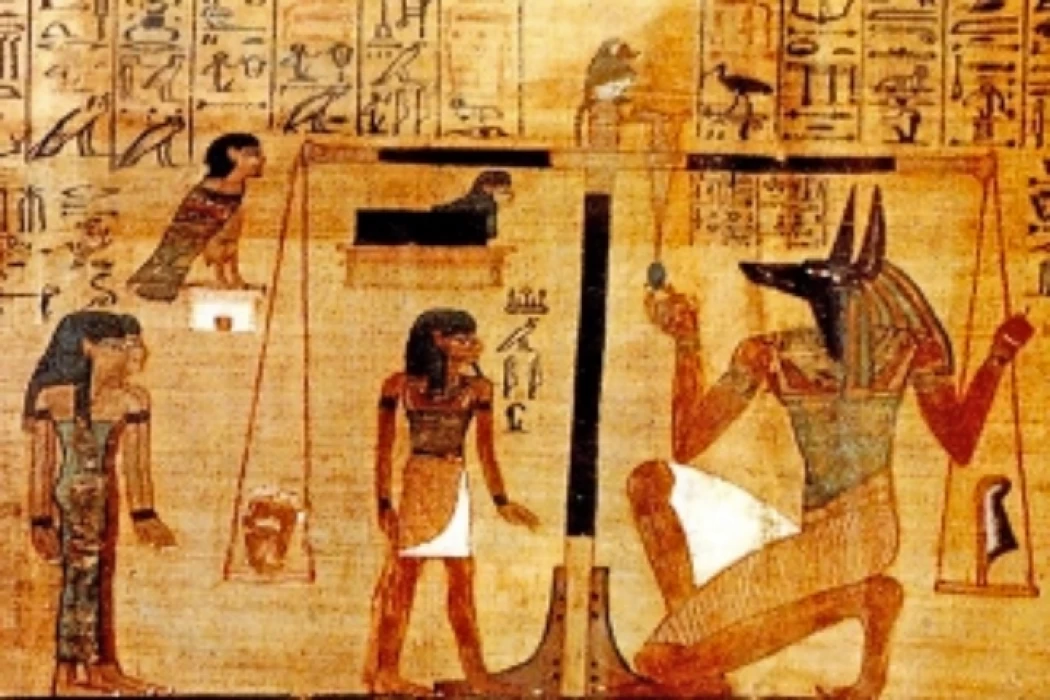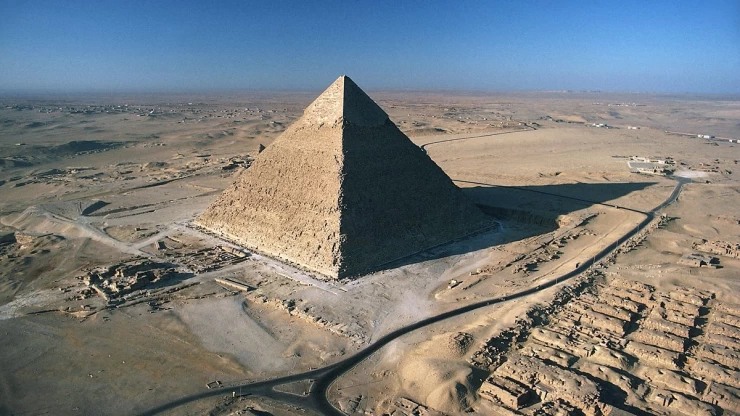
Deusa Meskhenet do parto
No antigo Egipto, as mulheres davam à luz crianças sentadas de pernas cruzadas num par de tijolos, conhecidos como tijolos de nascimento, e Meskhent era a deusa associada a esta forma de parto.
E portanto, na arte, ela era por vezes representada como um tijolo com cabeça de mulher, e sobre ela o útero de uma vaca. Outras vezes era retratada como uma mulher com um útero de vaca simbólico no seu toucado. Uma vez que foi responsável pela criação do Ka, foi associada ao destino.
Assim, foi por vezes dito que ela estava associada a Shai, que se tornou o deus do destino após a divindade ter evoluído de um conceito abstracto. Meskhent aparece de forma proeminente nos contos populares em fragmentos de papiro. Conta sobre o nascimento de cada um dos reis Oser Kaf, Sahure e Neferir Kare Kakai, os três primeiros reis da Quinta Dinastia, a quem na história se diz que são trigémeos.
Imediatamente após o nascimento de cada criança, Meskhenet apareceu e previu que ele se tornaria rei do Egipto.
Acredita-se também que Mesquenet é a primeira esposa. Andjiti, o deus do parto no submundo. Andjety parece ter sido adorado desde o pré-dinástico Andjet, e a maioria dos egiptólogos acreditam que ele é o deus que acabou por se tornar Osíris.
Who is Meskhenet the Egyptian goddess of childbirth?
In ancient Egypt, women gave birth to children while sitting cross-legged on a pair of bricks, known as birth bricks, and Meskhent was the goddess associated with this form of childbirth.
And therefore, in art, she was sometimes depicted as a brick with a woman's head, and on it a cow's uterus. Let's go on a unique Egypt tours to discover the lifestyle of people in ancient Egypt. At other times she was depicted as a woman with a symbolic cow's womb on her headdress.
Since it was responsible for the creation of Ka, it was associated with fate.
Thus, she was sometimes said to be associated with Shai, who became the god of fate after the deity evolved from an abstract concept. I advise you to check our Egypt day tours to Luxor, because this city is full of many secrets about Egyptian pharaohs and their symbols and mythology. You can take the Luxor west bank day tour, you will visit many amazing places such as Karnak temple, Valley of the kings and more.
She was sometimes depicted as a brick with a woman's head, and on it a cow's uterus. Let's go on a unique Egypt tours to discover the lifestyle of people in ancient Egypt. At other times she was depicted as a woman with a symbolic cow's.
Egyptian goddess Meskhenet
Meskhent features prominently in folk tales in papyrus fragments that you will discover during Egypt travel packages. It tells about the birth of each of the kings Oser Kaf, Sahure, and Neferir Kare Kakai, the first three kings of the Fifth Dynasty, who in the story are told that they are triplets.
Immediately after the birth of each child, Meskhenet appeared and predicted that he would become king of Egypt. Do not miss to book our Egypt luxury tours to gain more knowledge about secrets kings in ancient Egypt.
It is also believed that Meskhenet is the first wife. Andjiti, the god of childbirth in the underworld. Andjety appears to have been worshiped since the pre-dynastic Andjet, and most Egyptologists believe him to be the god who eventually became Osiris.
It is also believed that Meskhenet is the first wife. Andjiti, the god of childbirth in the underworld. Andjety appears to have been worshiped since the pre-dynastic Andjet, and most Egyptologists believe him to be the god who eventually became Osiris.
The birth chair was custom-made to fit the wife's body and weight. Its quality and design reflected social status and financial ability. Before the delivery date, the husband would walk around the house in the chair, including in front of it, and then place it in front of the door so the neighbors would know they were expecting a baby...The concept of the "birth chair" dates back to the Pharaonic era, when it was made of stone without a back. Later, it evolved to include a back and armrests.
The goddess Meskhent was responsible for determining the fate of newborns, as she protected the birth seat.















